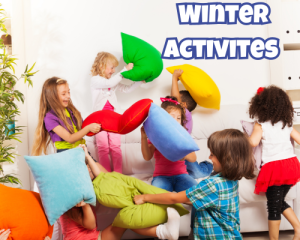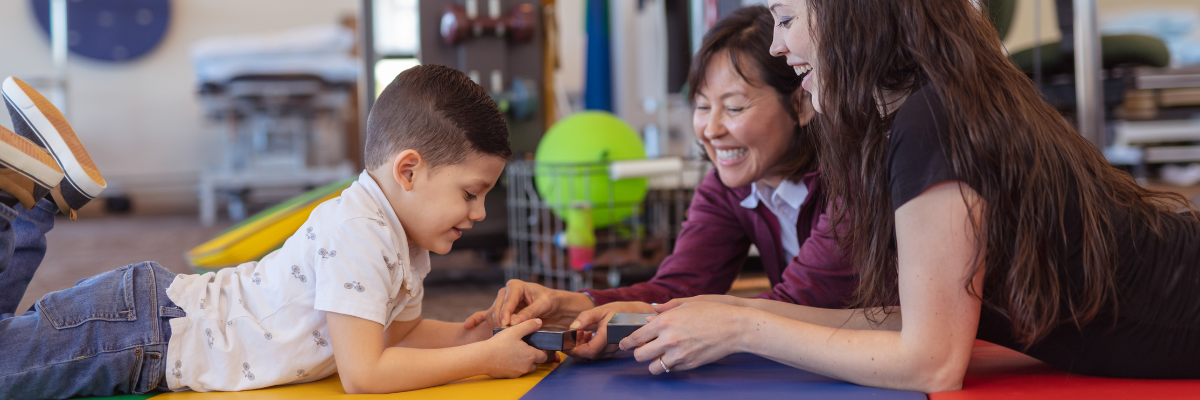What are types of self-care skills?
As children learn and grow, they have a drive to be independent and do things on their own. One area that an occupational therapist address in childhood development are their activities of daily living (ADLs), also known as self-care skills. Self-care skills are skills that are required to manage a person’s basic needs including:
- Brushing teeth
- Dressing (upper/lower body dressing, zippers, belts, shoe tying)
- Bathing
- Grooming (brushing/styling hair, nail cutting)
- Self-feeding
- Toileting
What are the building blocks necessary for self-care skills?
- Executive functioning skills (i.e. attention, sequencing, initiation of task)
- Fine motor skills (hand & finger strength, object manipulation)
- Receptive & expressive language (comprehension and alternative forms of communication to communicate wants, needs, thoughts and ideas)
- Sensory processing (tolerating sensory stimulation in the environment, such as grooming or dressing tasks for tactile processing)
- Coordination & motor planning (moving body through space in a functional way)
What age should my child be able to engage in self-care tasks?
It is important to understand that all children develop at their own pace and that is okay! Remember — there is no penalty for being cautious about your growing child, and if there is a problem acting early can make all the difference. Self care skills are the every day practice of the foundations skills for academic performance and not just life skills. According to the CDC and American Academy of Pediatrics, below are a few of the developmental milestones pertaining to self-care skills in early childhood development.
6-12 months
- Drinking from a cup
- Holding a bottle or cup independently
- Using tongue to move food around mouth
- Feeding self small crackers or other small pieces of food
1-2 years
- Settling themselves to sleep at night or during the day
- Attempting to brush teeth
- Removing own socks
- Cooperating with dressing by extending an arm or leg
2-3 years
- Using toilet with assistance and having daytime control
- Attempting to manipulate large buttons
- Distinguishing between urination and bowel movements, and names them correctly
- Using a napkin to wipe face and hands
- Feeding self simple meals using a fork or spoon
- Taking socks and shoes off
3-4 years
- Unbuttoning and buttoning large buttons
- Feeding self without difficulty
- Tolerating different clothing textures, seams, tags etc
- Toileting independently
- Brushing teeth independently or with supervision only
- Dressing and undressing self (only requiring assistance with laces, buttons, and other fasteners in awkward places)
4-5 years
- Choosing weather appropriate clothes
- Dressing self independently
- Attempting to bathe and groom with supervision only
5-6 years
- Showering or taking a bath independently
- Independently toileting during the day and at night
- Preparing simple meals (i.e. cereal)
- Independent grooming (combing hair, brushing teeth, flossing)
7-8 years
- Showering independently
- Taking on more responsibilities (i.e. chores)
- Preparing simple meals and helping with more complex meals (i.e. making a sandwich, using the microwave, spreading condiments, pouring from a larger container into a cup)
- Interest in taking on more complex grooming tasks – nail cutting, tolerating hair cuts, styling hair
How can an occupational therapist help address self-care difficulties?
Create a routine: Developing a consistent routine with a child can help them know what is expected of them and when to complete their self-care tasks throughout the day. Creating a routine may require a visual schedule or reward chart, something that an occupational therapist can help your child and family plan, develop, and implement in the home!
Improve fine motor skills: Almost all self-care skills require adequate fine motor skills, such as brushing teeth, using utensils, buttons, zippers, tying shoes, and more! An occupational therapist can help improve your child’s fine motor skills to increase independence of their self-care tasks.
Sensory integration: some children may have difficulty tolerating grooming or dressing tasks which can indicate a challenge with tactile processing. They may also have difficulty with tolerating hair cuts, nail cutting, or teeth brushing. Seeing an OT to address these sensory processing concerns can help your child to improve their ability to register and tolerate tactile input to improve their ability to complete these self-care tasks using a variety of treatment strategies.
Adaptation & modification of tools and the environment: An occupational therapist can recommend different types of adaptive equipment (i.e. button hook, weighted utensils, shoe horn, etc.) to help increase independence in self-care skills. They may also get creative by providing tips for adapting the environment to promote independence in the home.
Executive functioning skills & attention to task: If your child has difficulty with their higher level cognitive skills then self-care may be difficult. Seeing an OT could be helpful by implementing and utilizing a variety of treatment strategies for increasing attention, initiation of tasks, sequencing steps of an activity and more!
Caregiver/parent training: An occupational therapist may be able to provide tips and strategies to parents in the home for carryover of self-care skills into daily routine.
How can Carolina Therapy Connection help?
Through demonstrated excellence in clinical, school, and home-based practice, Carolina Therapy Connection’s occupational therapists provide screening, assessment, consultation, and treatment to children having difficulty with a wide variety of needs, including difficulty with self-care skills. We believe it is critical to make therapy as fun and motivating as possible by celebrating the small victories as well as major achievements. We have a strong focus on helping your child develop the skills appropriate to their age and current stage of development. We also use a holistic approach and evidence-based practices to help your child develop and grow to their greatest potential. If your child is having difficulty with any of the skills discussed above, call our clinic today at 252-341-9944 for a FREE occupational therapy screening! We currently provide occupational therapy services in Greenville, Goldsboro and New Bern, NC!
References
Holland, B. (2017, February 14). Top 10 ways occupational therapy can help children with self-care. Chicago Occupational Therapy. Retrieved November 2, 2021, from https://chicagooccupationaltherapy.com/articles/top-10-ways-occupational-therapy-can-help-children-with-self-care/.
Admin, K. S. W. (2016, November 27). Self care skills. Kid Sense Child Development. Retrieved November 2, 2021, from https://childdevelopment.com.au/areas-of-concern/self-care/self-care-skills/.
Centers for Disease Control and Prevention. (2021, January 22). CDC’s Developmental Milestones. Centers for Disease Control and Prevention. Retrieved November 2, 2021, from https://www.cdc.gov/ncbddd/actearly/milestones/index.html.





































